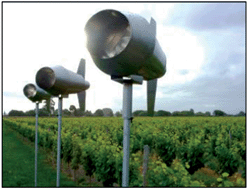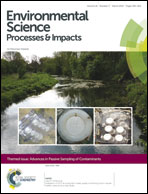Testing flow-through air samplers for use in near-field vapour drift studies by measuring pyrimethanil in air after spraying
Abstract
Pesticide volatilisation and subsequent vapour drift reduce a pesticide's efficiency and contribute to environmental contamination. High-volume air samplers (HVSs) are often used to measure pesticide concentrations in air but these samplers are expensive to purchase and require network electricity, limiting the number and type of sites where they can be deployed. The flow-through sampler (FTS) presents an opportunity to overcome these limitations. The FTS is a wind-driven passive sampler that has been developed to quantify organic contaminants in remote ecosystems. FTSs differ from other passive samplers in that they turn into the wind and use the wind to draw air through the sampling media. The main objective of this work was to evaluate the FTS in a near-field pesticide vapour drift study by comparing the concentrations of pyrimethanil in air measured using one HVS and three FTSs placed in the same location. Pyrimethanil was sprayed onto a vineyard as part of normal pest management procedures. Air samples were collected every eight hours for 48 h. The volume of air sampled by the FTSs was calculated using the measured relationship between ambient wind speed and the wind speed inside the sampler as determined with a separate wind tunnel study. The FTSs sampled 1.7 to 40.6 m3 of air during each 8 h sampling period, depending on wind speed, whereas the mean volume sampled by the HVS was 128.7 m3. Mean pyrimethanil concentrations ranged from 0.4 to 3.2 μg m−3 of air. Inter-sampler reproducibility, as represented by percent relative standard deviation, for the three FTSs was ∼20%. The largest difference in FTS-derived versus HVS-derived pyrimethanil concentrations occurred during the lowest wind-speed period. During this period, it is likely that the FTS predominately acted like a traditional diffusion-based passive sampler. As indicated by both types of sampler, pyrimethanil concentrations in air changed by a factor of ∼2 during the two days after spaying. This work shows that the FTS has good potential for use in near-field vapour drift studies and that FTS technology could make multi-sampler experimental designs more feasible.

- This article is part of the themed collection: Advances in Passive Sampling of Contaminants

 Please wait while we load your content...
Please wait while we load your content...